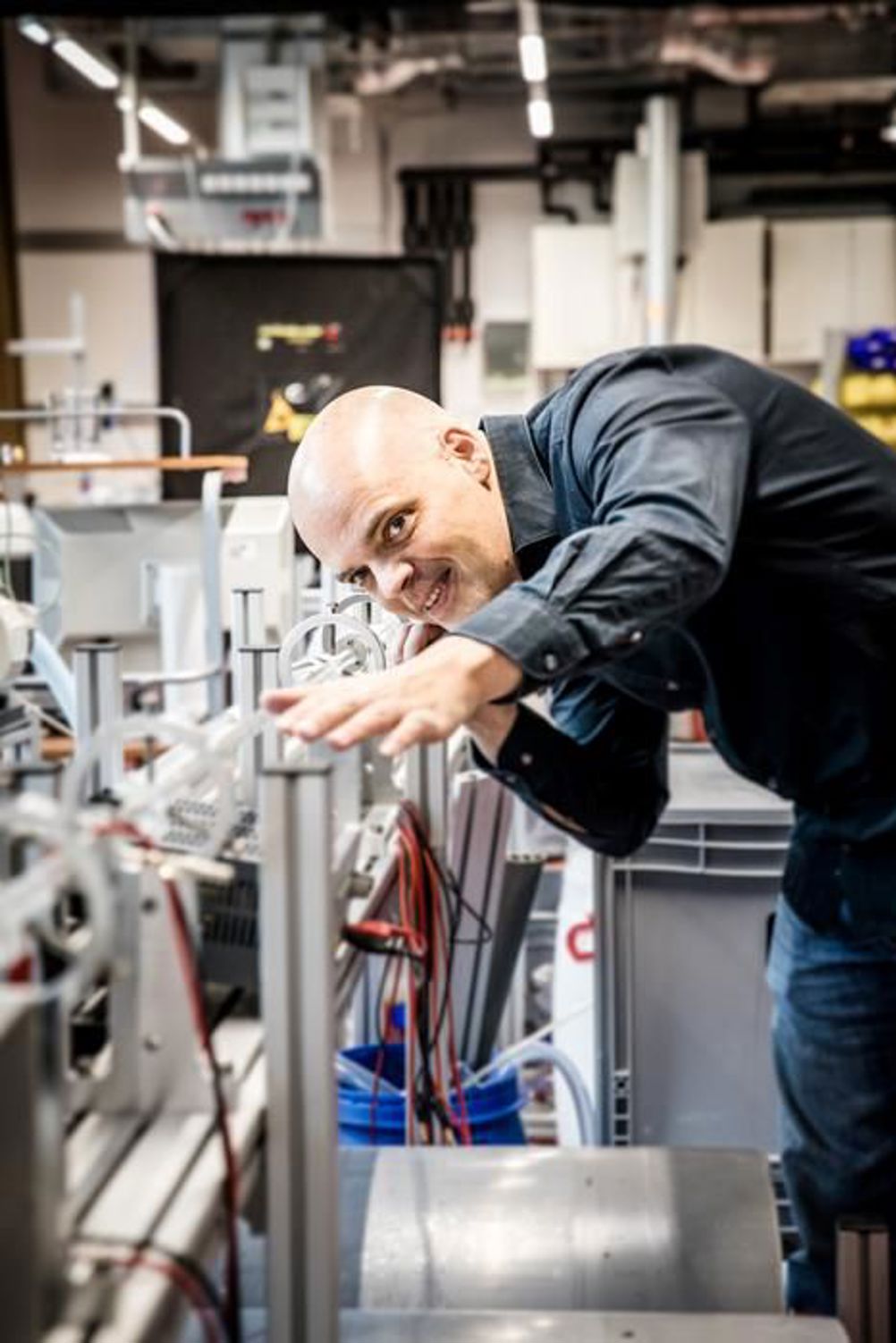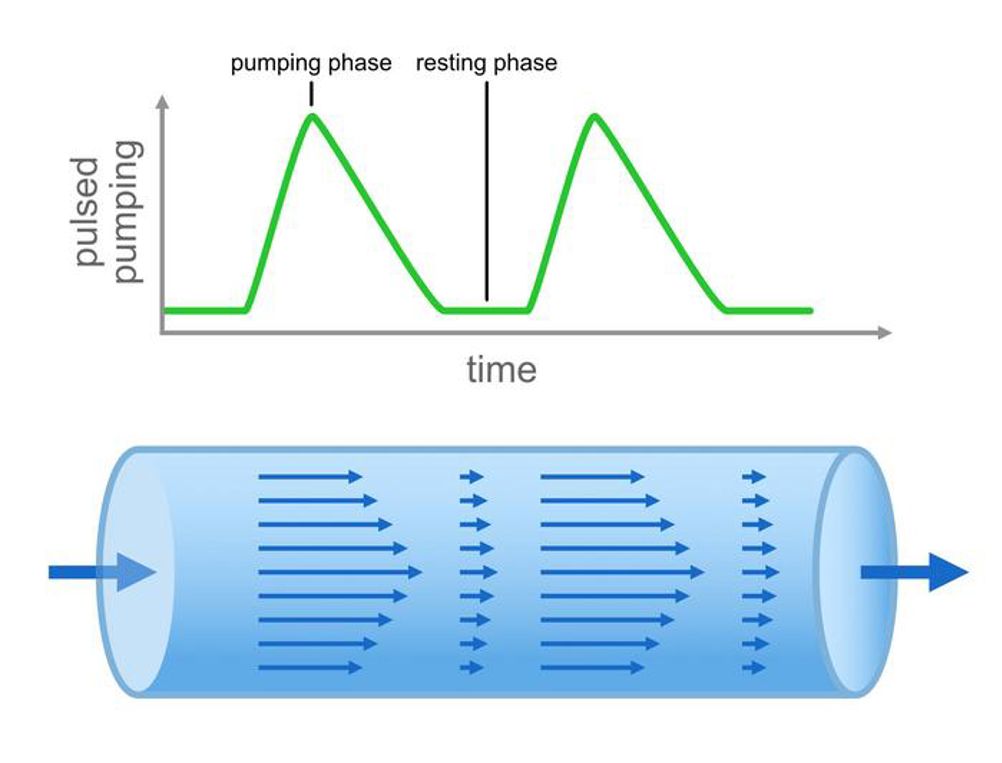In a new study, published in the scientific journal Nature, the scientists showed that pumping liquids through a pipe in pulses – much like the human heart pumps blood – can reduce the friction in the pipe and therefore also the energy consumed.
“Over the years, researchers and engineers have been trying to make pumping fluids more efficient,” Davide Scarselli, first author of the study, said. “While many solutions are being simulated or tested in labs, they often are too complex and therefore too costly to be implemented in real industrial applications. We were looking for an approach that does not require complicated structural changes to the infrastructure like sensors and actuators.”
Instead of changing the makeup of the pipes to reduce the friction between the moving liquid and the pipes’ walls, the scientists tried a different approach.
“Unlike common mechanical pumps, which create a steady stream of liquid, the heart pulsates,” explained Björn Hof, professor at ISTA. “We were curious if there may be an advantage to this peculiar propulsion form.”

Scarselli and his colleague Atul Varshney created several experimental setups using clear pipes with different lengths and diameters through which they pumped water.
“The baseline for our experiments was a steady flow of water, where swirls and eddies moved chaotically while being pushed through the pipe,” said Scarselli. The turbulence creates a lot of the friction between the liquid and the walls of the pipe, costing energy to overcome.
The researchers made the turbulence visible by adding tiny reflective particles to the water and shining a laser through the clear pipe.
The scientists tried several modes of pulsating pumping. Some pulse modes would first accelerate the water slowly and then quickly stop it, while others would do it the other way around. “Typically pulsation increased the drag and the energy required for pumping, which was not what we were looking for,” said Hof. “However, when we introduced a short resting phase between the pulses where the pump does not push the water – just like the human heart does – we got much better results.”
With these resting phases between the pumping pulses, the amount of turbulence in the pipe decreased.

“While we demonstrated promising results in the lab, real-world applications of our research are less straight forward,” said Scarselli. “Pumps would have to be refitted to produce these pulsating motions. However, this would still be much less costly than modifications to the pipe walls or fitting of actuators. We hope that other scientists will build upon our results to explore these nature-inspired solutions for industrial applications.”
Turbulence suppression by cardiac cycle inspired pulsatile driving of pipe flow is published in the journal Nature.
DOI: 10.1038/s41586-023-06399-5





